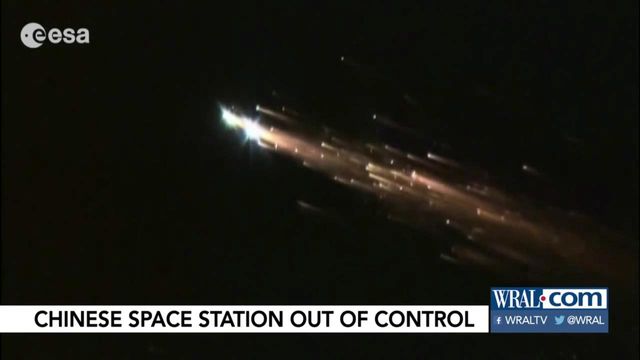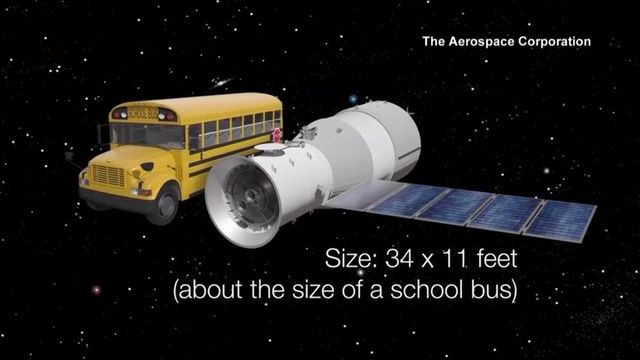Nothing to worry about as Chinese Space Station falls out of orbit soon
Launched in September 2011, Tiangong-1 was designed by the China National Space Administration (CNSA) as an experimental laboratory for two astronauts.
Posted — UpdatedTiangong-1, China’s first experimental space station is de-orbiting. It is expected to complete an uncontrolled reentry between March 29 and April 9. Launched in September 2011, Tiangong-1 was designed by the China National Space Administration (CNSA) as an experimental laboratory for two astronauts.
You may have read accounts with fantastic headlines pinpointing where and when the “toxic” station will “crash into Earth." This is nonsense based on hype, not fact. Those stories do make good indicators of where not to get your science news, though.
The chances of anything from Tiangong-1 hitting someone are 1 million times smaller than winning the Powerball jackpot. Debris hitting someone has only been documented once since humans started putting satellites into orbit in the 1950s — that piece of debris weighed only a few ounces, and the woman was uninjured.
A number of those reports mention specific areas such as Michigan. While the shape of the orbit does place areas near the 43 degrees north and south latitude at a slightly higher impact probability, that is only by a few percentage points.
Such a specific claim is not unlike a member of the WRAL weather team spotting a hurricane forming off the African coast and predicting the mile post along North Carolina’s Outer Banks where it will hit weeks in advance. Sure, the location of the Outer Banks puts it at a higher risk for storms, but this is a wild guess at best that you’ll never see out of a scientist.
We can only say with any level of certainty that the station will come down somewhere between 42.7 degrees north latitude and 42.7 south latitude, an area that covers about 2/3 of the Earth’s surface. Remember that about 3/4 of the Earth’s surface is covered by water and only about 10 percent of that remaining land is populated by humans.
The reason for the uncertainty is the same whether predicting where and when a hurricane will hit or a satellite will deorbit: the atmosphere. The upper atmosphere Tiangong-1 is flying through is surprisingly lumpy. Density is variable throughout the atmosphere and is influenced by changing solar activity, which makes predictions even more difficult, especially this far out.
Over time, as any satellite encounters denser atmosphere, it loses speed and altitude. If that orbit isn't raised again it reaches a point where it can no longer stay in orbit. Traveling at more than 16,000 miles per hour creates a lot of friction with that increasingly dense atmosphere, causing the the object to break up. Spacecraft are very fragile things, built to save weight. Most debris will burn up, but some small bits of debris could make it the ground.
The day before deorbit, predictions within hours might be possible. The day of, those predictions could perhaps improve to (many) minutes. Even then, those speeds translate a minute or two of error to a footprint on the ground as wide as U.S. state or European country.
So relax. Most of the station will burn up, and anything that manages to survive will likely land in an ocean or otherwise un-populated area.
Related Topics
• Credits
Copyright 2024 by Capitol Broadcasting Company. All rights reserved. This material may not be published, broadcast, rewritten or redistributed.






